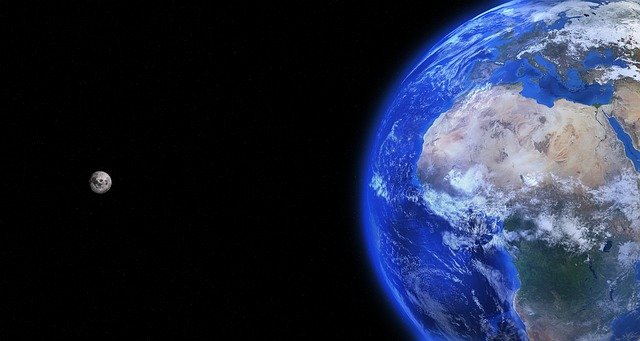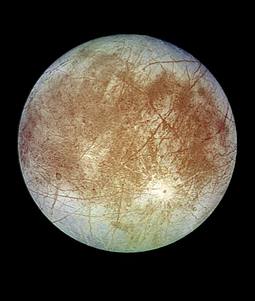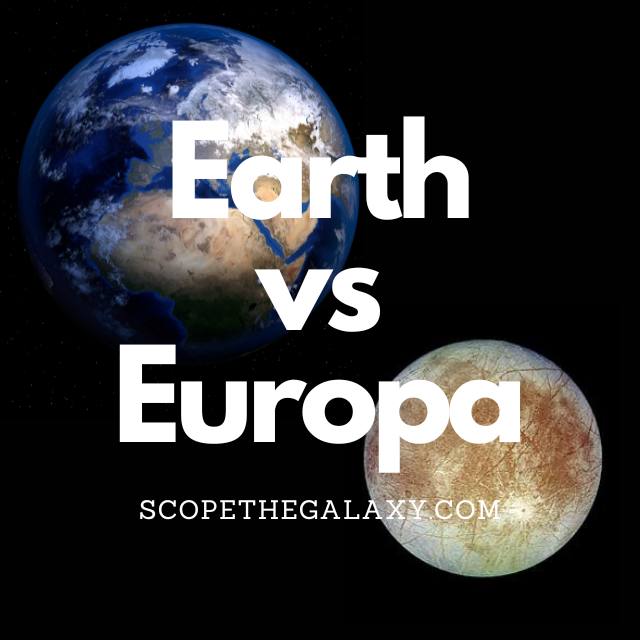*This post may contain affiliate links. This means we may make a commission if you purchase an item using one of our links*
The main differences between Earth and Europa are that Earth is nearly 4 times bigger with a diameter of 12,742km compared to Europa’s 3121.6km, is able to sustain life as a result of its position from the Sun whereas Europa is bone chilling, averaging -160°C on average and Earth is a planet with a singular moon orbiting it whereas Europa is Jupiter’s 4th largest moon and has no other entity orbiting it.
There are numerous other differences between the two, from their gravitational strength, density and more so, continue reading for a more thorough breakdown of these below.
What Is The Planet Earth?
Table of Contents

Our home planet Earth is the 3rd farthest planet from the Sun, made up of a mixture of water and solid rock like objects, and is the only entity in our solar system known to allow intelligent life forms like ourselves to exist.
Earth’s distance of 152 million km from the Sun has allowed it to remain within the goldilocks zone and as a result, the planet has been able to thrive for millions of years. It orbits the Sun in a circular pattern, much like all the other planets, has only one natural satellite which would be the Moon and is a terrestrial planet to boot.
In regards to its diameter, Earth is the 5th largest planet with a diameter 12,742km.
Earth’s temperature ranges based on the region you’re located where it can be from as low as -94 degrees Celsius in Antarctica to as high as 50 – 55 degrees Celsius in Tunisia.
As for the planets composition, it consists of the crust, the mantle, the outer core and the inner core, where the inner core is the hottest element within the Earth reaching temperature in excess of 5,200 degrees Celsius.
In regards to some of its most unique features, Earth is around 71% water, has an atmosphere consisting mostly of oxygen and nitrogen that is also made up of 5 main layers, with the highest to lowest being the troposphere, stratosphere, mesosphere, thermosphere and exosphere.
A day on Earth is 24 hours and an orbital cycle around the Sun takes 365 days to complete. It’s axial tilt is more distinct at 23.5 degrees to the right.
What Is The Moon Europa?

Europa is the smallest of the Galilean moons, first discovered on 8th January 1610. The surface of this icy world is frozen, but scientists believe a watery ocean could lie beneath the surface. And in 2012, researchers found a possible water plume in the Southern polar region of Europa.
This research is yet to be confirmed; still, it gives us reasonable grounds to hypothesize that water could exist on this icy moon.
Estimates place Europa at around 4.5 billion years old (the same age as its planet, Jupiter), and its average distance from the Sun is approximately 780 million km.
It has a diameter of 3,121.6km, which makes it larger than Pluto but smaller than the Earth’s moon, and the maximum temperature is a chilly -160 degrees Celsius. In regards to mass, it measures in around 4.8 × 10^22 kg.
Europa takes three-and-a-half days to orbit its planet at an average distance of 670,900km, and it is tidally locked, meaning the same side of the moon always faces Jupiter.
Among the fascinating features of this ice moon is its incredibly reflective nature. The icy crust of this body provides a light reflectivity of 0.64 – the highest of any moon in the solar system.
Data from the Galileo spacecraft suggests that Europa is composed of an iron core, rocky mantle, and silicate rock (a similar composition to Earth).
The moon’s surface is covered in cracks, which many theorize could result from tidal currents beneath the surface. It is this potential of water – and of life – that keeps astronomers so interested in this moon.
Europa might be small, but astronomers estimate it holds two to three times more water than the Earth. In addition, this moon possesses the essential elements for life, such as carbon, oxygen, hydrogen, and nitrogen.
There may be no solar energy on this moon, but hydrothermal vents could provide energy, and tidal heating from Jupiter could provide a heat source and keep the moon stable enough for life to form. In addition, the liquid ocean is well protected from radiation from thick, icy surfaces.
Similarities Between Earth And Europa
Europa and Earth do share a few similarities, which in this case includes the following:
- Both have a hotter central core.
- Both have a rocky, terrestrial surface.
- Both are spherical in shape.
- Neither have rings surrounding them.
- Both are part of the same solar system
- Both have ice present on their surface.
Differences Between Earth And Europa
As for the differences they include the following:
- Earth is the bigger of the two with a diameter of 12,742km whereas Europa is 3,121.6km in diameter.
- Europa’s atmosphere is virtually non-existent when compared to Earth’s.
- Europa’s surface is made of rocks and ice water whereas Earth consists of water, ice, rocks, volcanoes and more.
- Earth has 1 moon whilst Europa has 0.
- Earth is the 3rd farthest planet from the Sun whereas Europa is joint 5th with Jupiter. As a result it takes Earth 1 year (365 days) to orbit the Sun whilst Europa would do so in 12 years.
- Europa is tidally locked to Jupiter whereas Earth is not tidally locked to anything.
- Earth’s gravitational strength is 9.807 m/s² whereas Europa is far weaker in this regard with a strength of 1.315 m/s².
- Earth’s density is 5.51 g/cm³. Europa’s is far less being 3.01 g/cm³.
- A day on Europa takes 3.5 day to complete whereas a day on Earth is completed in 24 hours.
- Earth’s axial tilt is 23.5 degrees whilst Europa’s axial tilt is 0.1 degrees.
- Europa is a natural satellite whilst Earth is an officially recognised planet.
- Earth is 13.9 degrees Celsius on average whereas Europa is -160 degrees Celsius on average.
- Europa orbits Jupiter in an elliptical pattern whilst Earth does so in a circular pattern.
Summary
Earth and Europa have a few similarities in the sense that both have water based compounds on their surface and terrestrial in nature however, there are a variety of differences between the two.
Whether it be in regards to size, temperature, orbital cycles, gravity and beyond so despite sharing some similarities, Earth is still the only entity in our solar system that is known to harbor intelligent life and Europa is simply another one of Jupiter’s moons.

